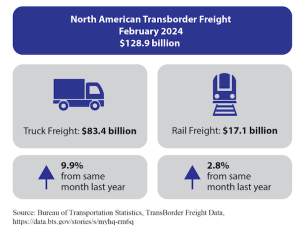Ocean carriers serving the US-Asia freight market are attempting to recover a share of higher inland rail and trucking costs attributed to rising diesel fuel prices. Through the Westbound Transpacific Stabilization Agreement (WTSA), a liner industry research and discussion group, lines have adopted an inland fuel surcharge that will take effect on October 1, 2005.
A firm amount for the new surcharge has not been established yet. WTSA says the surcharge will float, in accordance with fluctuating national highway diesel fuel prices posted weekly by the US Department of Energy, and will be adjusted quarterly ' on January 1, April 1, July 1 and October 1. The upcoming October 1 surcharge level will be determined by a weighted averaging of diesel fuel prices over a 13-week period ending August 30, at which time the level will be known and publicly announced. Two per-container surcharge tiers will be established, one for longhaul rail and combination rail/truck moves, and one for pure truck moves which are largely regional and local.
Since the beginning of 2005, DOE reports that the per-gallon diesel fuel price has risen about 23%, from $1.96 to $2.41. Class 1 railroads, along with long-haul and regional trucking firms, have been imposing and increasing fuel surcharges to recover these costs since the beginning of 2005. "As the lead transportation and logistics providers for many international shipments, ocean carriers have been on the receiving end of multiple inland charges as diesel prices have gone up," says WTSA Executive Director Albert A. Pierce. "That's not a sustainable situation; a portion of the burden must be shared by the customer base."
Pierce emphasized that, in the interest of simplicity, WTSA carriers use the same baseline fuel prices and methodologies as rail, truck, intermodal marketing company and other vendors have used, to calculate their surcharge. "We chose not to reinvent methodology, or to complicate the process by trying to recover significant but indirect fuel-related costs, such as for empty equipment repositioning," he said. "The result is less than full recovery in some cases but with a simpler, clearer calculation formula and charge."







